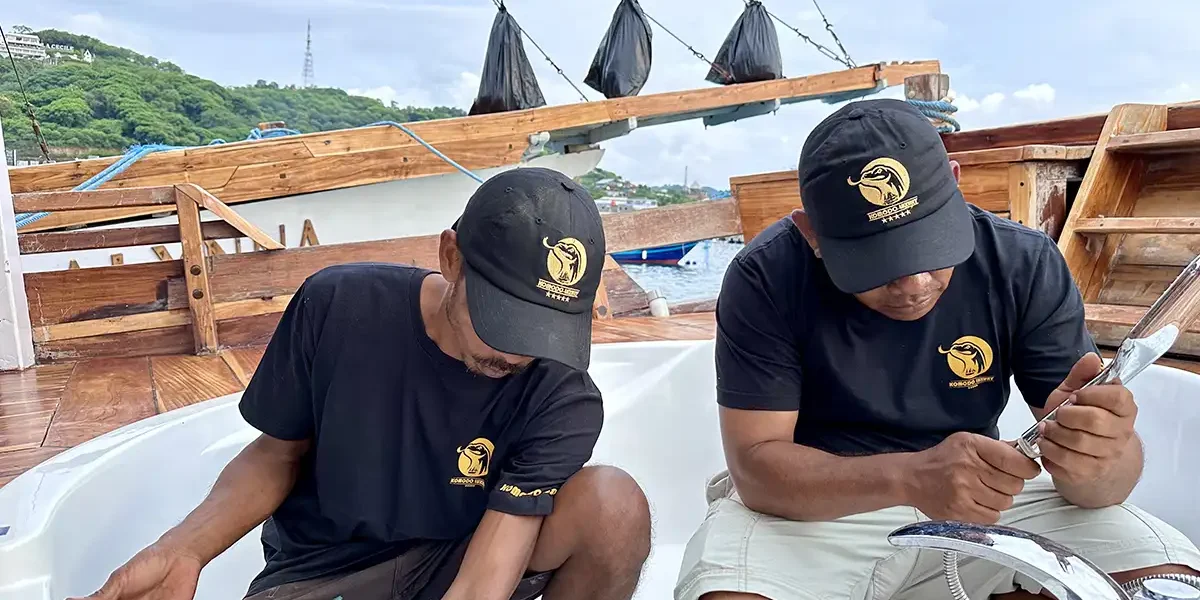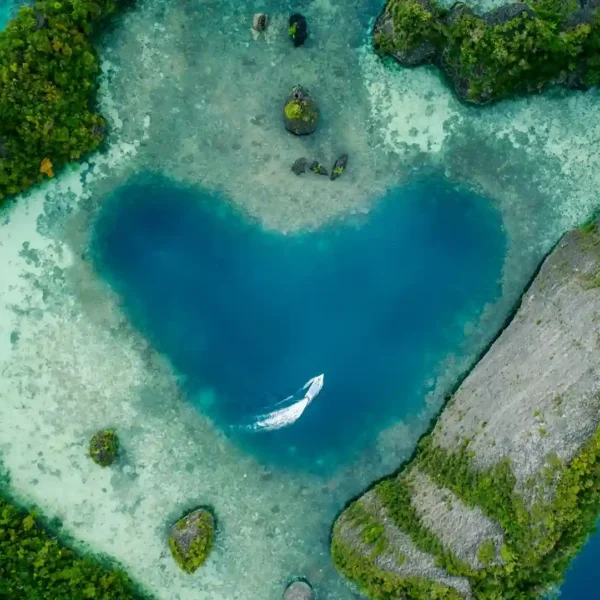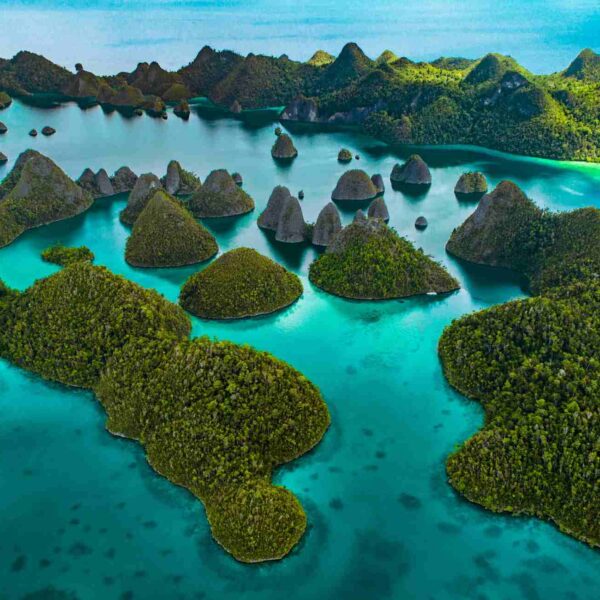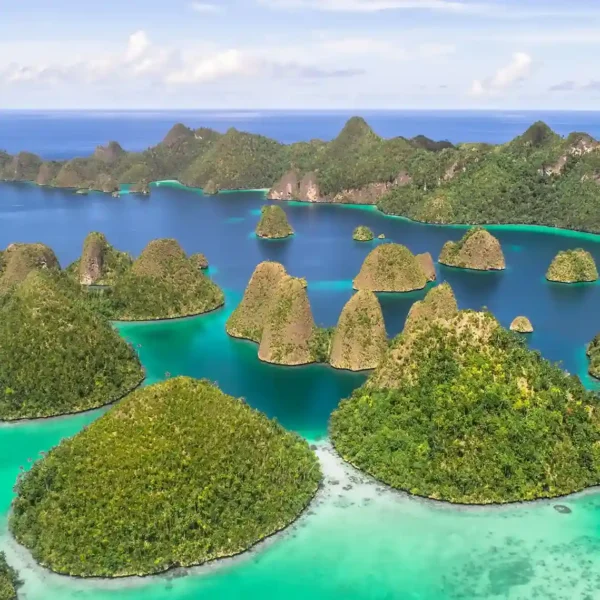Recently, environmental issues have become a hot topic. Even though it seems difficult, it is very important to learn how to become an ecotourist.
There’re a few ways to take an eco-friendly trip. Even more, you can practice some of the following tips.
How to Become an Ecotourist: Tips Before Travelling
Becoming an ecotourist needs some preparation. Before traveling, you can consider the following tips:
1. Plan Where and When to Visit
When you are thinking about the destinations, you should consider traveling during the off-season.
Off-season trip doesn’t only cost less. However, it allows you to visit an area with relatively fewer tourists.
Often, over-tourism can be a big problem if the number of visitors exceeds the destination’s capacity.
The negative effects will not only happen to the environment but also to the local communities.
2. Book an Eco-friendly Accommodation
Today, eco-hotels & ecolodges abound so it is better to book an eco-friendly accommodation for your stay. They are popular for being more energy-efficient.
Besides that, they take measures carefully to produce a lower carbon footprint. In addition, they are involved consistently in the effort to reduce emissions.
When possible, they even increase recycling & become more self-sustaining.
And, many eco-friendly accommodations allow you to experience and even partake in the everyday life as well as the local community’s happenings.
3. Register or Organize for Local Ecotours
One more thing about how to become a green tourist, you have to choose an eco-tour which is operated by local people. It will not only return profits to the local community.
However, it offers more benefits because the local people always know the best locations that offer you the perfect experience.
How to Become an Ecotourist: What to Do at the Destination
When you are at your preferred destination, there are many tips on how to become an eco-tourist you need to follow.
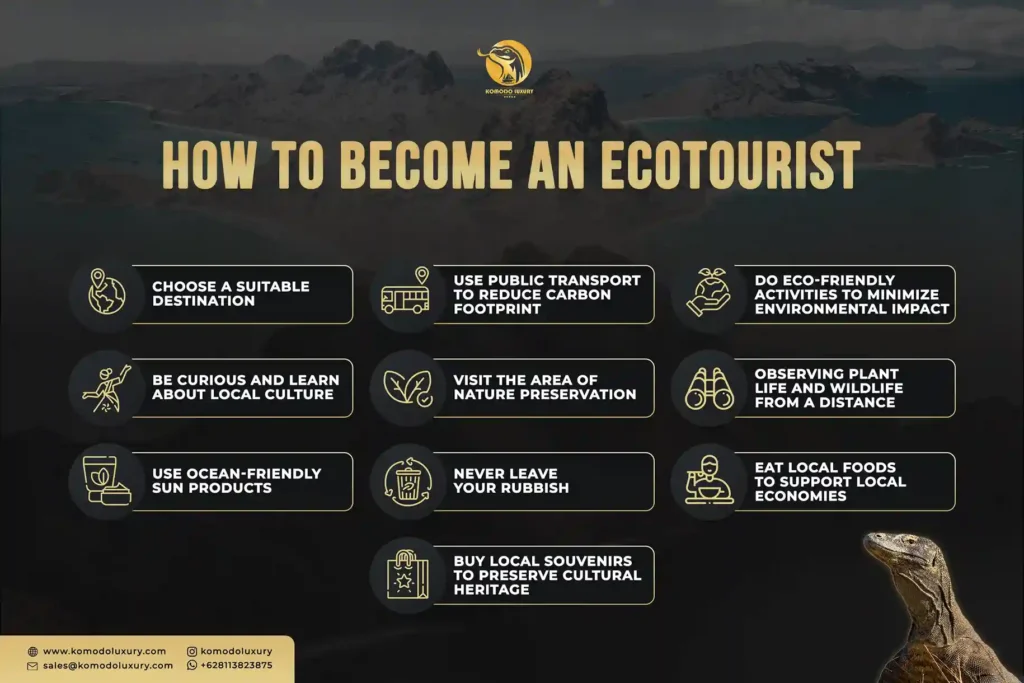
1. Choose a Suitable Destination
To be an ecotourist, you have to select a suitable destination for your trip first. Areas offering birdwatching, trekking, or camping belong to ideal destinations for ecotourism.
Those activities have environment-related low environmental impacts. We recommend visiting nature reserves where you can do any eco-friendly activities such as trek and see various wild animals in their natural habitat. You could visit Komodo National Park or Raja Ampat as an option.
2. Use Public Transports
The next idea is to always use eco-friendly transportation to go to your destination. And, trains or buses belong to the common transportation for tourists.
If possible, it is also better to go to a tourist attraction on foot or by cycle, especially if the distance is not so long.
If you travel by water transportation, you can use paddle boards, rowboats, or sailboats. Of course, we suggest you get updated information about the weather.
3. Do Eco-friendly Activities

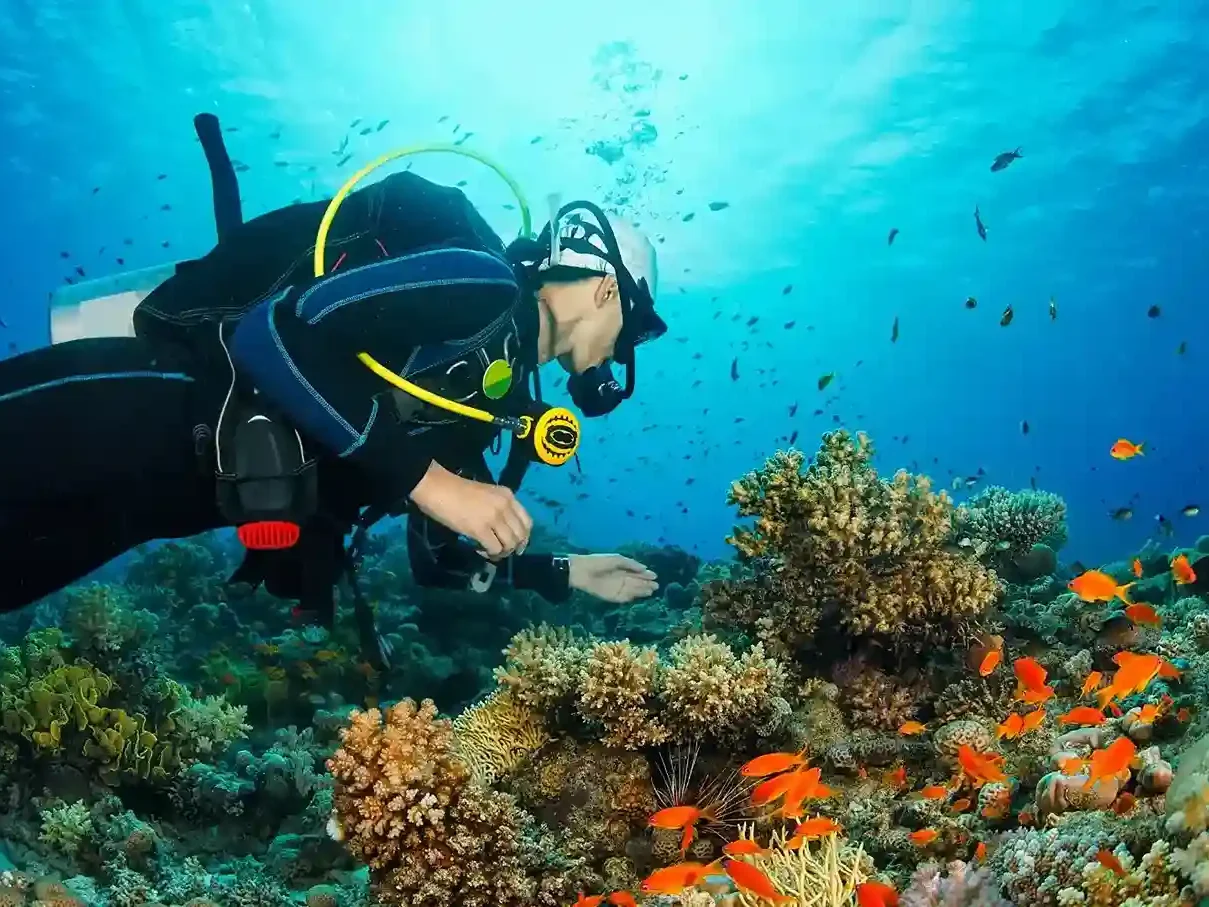


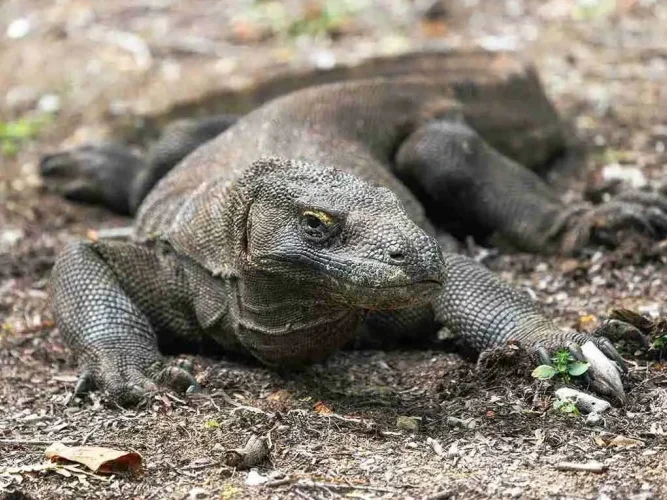

Another way to be a conscious ecotourist is to choose tourist activities that will not cause negative impacts on the environment.
You can visit tourist destinations offering nature-based activities such as nature journaling, wildlife safaris, exploring forests, birdwatching, diving, cycling, trekking, etc.
When you visit a new tourist attraction, it is a good idea to interact with the local community. Then, you can learn about the local indigenous practices.
Of course, such activities will have no or little impact and effects on the environment. Furthermore, ecotourists highly prefer these fun activities.
4. Be Inquisitive & Learn
This is also a way to become an eco-tourist where you should always learn. While visiting a tourist attraction, keep in mind to engage in conversation with people.
You should also support the conservation efforts if possible. Ecotourism is a win-win solution that is not only useful for tourists but also local communities.
Indeed, you, as an ecotourist, have a responsibility to help keep the environment.
5. Visit Areas of Nature Preservation
These areas are key to ecotourism. You can see various animals in their natural habitats and enjoy the beauty of rare flora and fauna. With a ranger, you will learn more about nature and locals than going alone.

You can consider visiting Komodo National Park or Raja Ampat Marine National Park while sailing on a boat and doing eco-friendly things such as catching sunset, sunbathing, wildlife safaris, diving, trekking, etc. By visiting nature reserves and preserving them, you are contributing to being an ecotourist.
6. Practice Hands-off Approaches to Plant-life and Wildlife
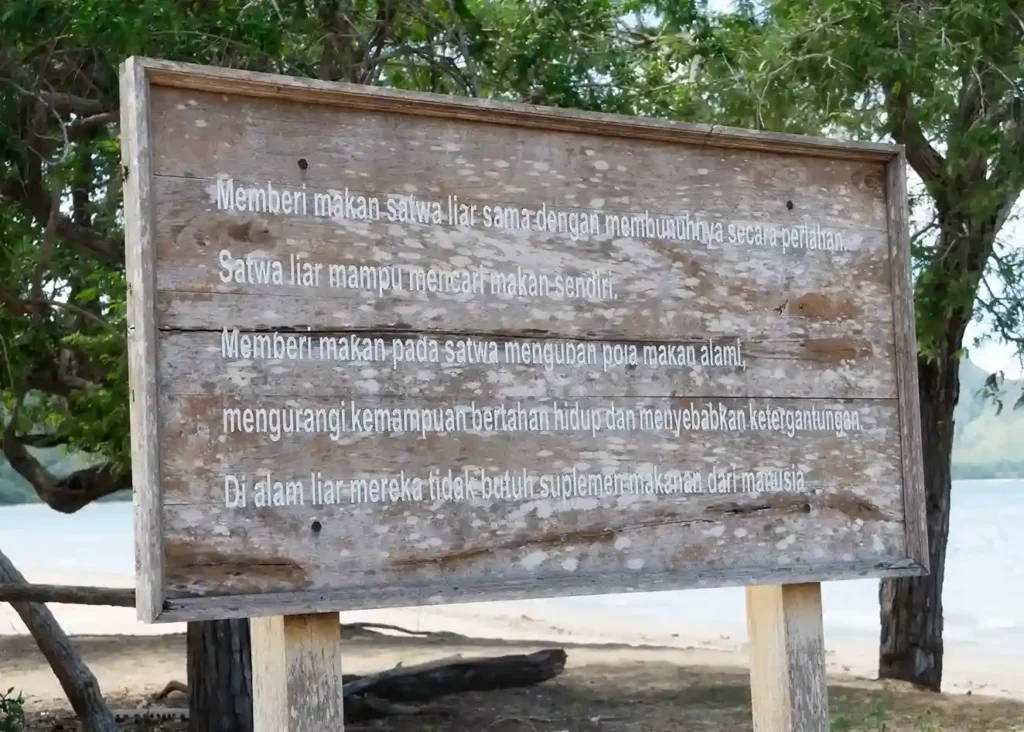
You can take photos but make sure that you leave footprints only. This action is very important in ecotourism.
You shouldn’t touch wildlife to protect the environment. Besides that, it doesn’t stress the wildlife in their natural habitats.
Therefore, it is best to observe plant life and wildlife from a distance because it is helpful to control your desire to touch.
Even more, not touching them will also protect you. Sometimes, plant life and animals’ reactions can be poisonous.
Moreover, taking flowers can be a vandal act in many cases. So, it is better to become a bystander only as well as to witness nature.
You don’t need to interact with them. However, you should only see their beauty and take as many pictures as you want.
7. Use Sun Products That Are Ocean-friendly
Reportedly, sun products such as sprays, oils, and lotions can cause damage to coral reefs.
Oxybenzone & octinoxate belong to the most popular ingredients that harm coral reefs. Unfortunately, they are common chemicals you can find in many sunscreen products.
In this case, it is better to use cotton clothing, sun shades, and sun products that are safe for corals.
8. Never Leave Your Rubbish
Littering from tourists can cause a big problem, especially for the environment. This is an easy way to become an ecotourist.
So, you should bring a rubbish bag with you. Then, you can take the rubbish and dispose of the rubbish when finding a rubbish bin.
To reduce plastic pollution, you can consider carrying sustainable items if possible. It means, switching from plastic to eco-friendly products is a must.
9. Eat Local Foods
As a popular saying about traveling, you should go where local people go. This is where you can find the best place to eat food.
Local people know better about the best places that serve the best foods, friendly people, and the best prices.
This advice is very useful for eco-travelers, so you should follow it. Having meals at a local eating establishment not only offers you an authentic experience.
However, it also directs the money back into the local community. That’s the importance of following this idea.
10. Buy Local Souvenirs

When you go back home, the people who wait for you will be happy if they see you carrying special souvenirs. It will be better if you choose souvenirs made by locals.
Buying locally made items or souvenirs doesn’t only contribute to the locals. However, you will be confident that the work quality is better than other widely available options.
There’s also an indirect effect from your purchase, where travel agencies will dictate the options available based on your demands.
If more people show interest in buying locally crafted products, the tourism industry is willing to offer these options more openly.
It is different when you buy cheap, mass-manufactured & commonly available souvenirs that don’t offer anything special.
You better take time to look closer at the local community or take something unique with you. Of course, this will give you a more special feeling.
Well, that’s how to become an ecotourist. You can start practicing those tips now, especially if you plan to have a vacation shortly.
Read more: 7 Interesting Facts About Komodo National Park You Need to Know Before Visiting








